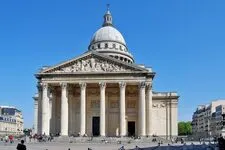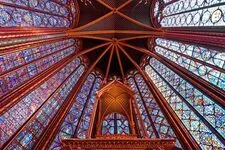The Sorbonne

Discover the history of the Sorbonne, this prestigious place of education in the Latin Quarter with international renown since the 13th century.
The Origins of the Sorbonne
The name Sorbonne comes from its founder, Robert de Sorbon, who was the chaplain and confessor of King Louis IX. The history of the place has always been intrinsically linked to that of the University of Paris, which was one of the most important medieval universities in the capital. Over the centuries, the Sorbonne became the symbol of this prestigious place that trained some of the greatest philosophers and masters of theology in history. The doors of the University of Paris opened in the 13th century and constituted the association of all the colleges on the left bank of the city. It was here that all the clerics of Paris were trained, all the administrative agents of the royal institutions (courts of accounts, tribunals, parliament, council of state…) as well as the agents of ecclesiastical institutions (bishops, abbots, agents of education and hospitals…). The young students from the Four Nations of the time (French, Norman, Picard, and English) came here to take courses in law, medicine, theology, and the arts. The University thus enjoyed great prestige and unparalleled international renown.
In 1253, Robert de Sorbon opened his college on the Parisian hill of Sainte-Geneviève. The institution was initially intended to train the poorest students (like many colleges that housed on the hill), but very quickly the Sorbonne college gained a certain reputation, gradually becoming the famous Faculty of Theology La Sorbonne.
The 17th century saw the Sorbonne change its face. Cardinal Richelieu wanted to bring a breath of renewal to the faculty's buildings and asked architect Jacques Lemercier to oversee the work. Very involved in the life of the Sorbonne, the Cardinal Duke of Richelieu even became its principal in 1622.
The upheavals of the French Revolution forced the doors of La Sorbonne to close for a time and eventually become simple artists' workshops in 1801. Under the Restoration, Louis XVIII decided to restore the buildings of the Sorbonne to their original purpose, namely to be an educational institution. In 1821, the Academy of Paris and the School of Charters (which prepares for careers in the conservation of archives and written heritage) took possession of the premises.
The Temple of Knowledge
The building you can admire today dates from 1901. It was built at the request of Jules Ferry, former Minister of Public Instruction. Its architect, Henri-Paul Nénot, wanted to give the university a complex and eclectic façade, blending neo-Renaissance architectural styles with ancient and even classical styles. The result is superb and despite the great diversity of the architect's inspirations, the whole is of a homogeneity and harmony praised by all. The Sorbonne is also adorned with various plaques on which are engraved the names of all the academies of France as well as the coats of arms of the cities that housed a college at the time.
The Sorbonne Today
The Sorbonne has enjoyed an international aura since its first construction in the 13th century. It still evokes today a high place of education and culture as well as sciences and arts. Knowledge has been transmitted here for centuries, a knowledge that aims to be prestigious, almost elitist despite its democratic intentions from the beginning. The Sorbonne is a promise of excellence and, eight centuries after its foundation, the university still holds its place as a national representative on the global stage of education of the sharp-minded French people.
The University now hosts the headquarters of the Academy Rectorate and the Chancellery of the Universities of Paris, as well as institutions of higher education with international renown, but also university research laboratories. What was temporarily the headquarters of the protest movement of May 1968 is now composed of four autonomous universities: Paris I Panthéon-Sorbonne, Paris III Sorbonne-Nouvelle, Paris IV Paris-Sorbonne, and Paris V René Descartes.
""
Activities in the Surroundings

Pantheon of Paris

Vedettes du Pont Neuf

Paradis Latin
